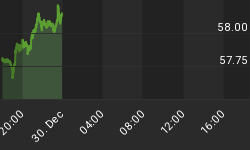The Reserve Bank of Australia raised its overnight rate by 25-bps to 5.75% in line with our expectations (see last mailer Tuesday 9:58 am) but against the 55% market consensus of a rate hold. This was the first rate hike in 14 months.
Australian dollar hits 8-month highs vs the US dollar at 76.80 cents, posting its 6th consecutive weekly gain, the longest wining weekly streak since November 2004.
The RBA explained its rate hike via the growth impetus from abroad as well as domestic dynamics such as accelerating wages growth, labour scarcity. It also indicated that: "Consumer price inflation has picked up to around 3 per cent in recent quarters. While this partly reflected rising fuel costs, underlying consumer price inflation also increased in the March quarter, to around 2¾ per cent, a rate it had not been expected to reach until the second half of the year."
Indeed, in its recent policy statements, the RBA has regularly referred to the continued stimulus from international developments and robust commodity prices. The RBA did mention at its February rate decision that it "continue to monitor developments and make policy adjustments as required to promote sustainable economic growth with low inflation".
The rise in commodity prices has been a boon to Australia's exports especially since the nation's exports of minerals, agriculture and products accounted for 31%, 22% and 23% of total exports in 2005 respectively. Also helping the trend is Australia's primary dependence on exports from Europe and North Asia --both of which are the top purchasers of the aforementioned commodities--and enjoy a steady increase in business and household spending. Aussie exports to North Asia accounted for 38% of total exports in 2005 (Japan accounting 44% of that region's exports) and exports to Europe accounted for 14% of total exports.
In light of continued expansion in the household and corporate sector, accompanied by creeping inflationary pressures and a relatively stable exchange rate, the RBA had long made the case for further tightening yet did not shed any detail as to the timeliness of it. This was the right time for the hike, especially with record high prices in fuels and metals.
On the exchange rate front, the Aussie's effective trade weighted exchange rate is up 5% from its late March lows but is off its 2-month highs, thus may not present a problem of excessive currency strength to the central bank. With commodity prices at their record highs, with the year on year quarterly core CPI rate standing above the RBA's preferred target of 2.0% for 6 quarters and with Australia's dependence on the price for heavy industry commodities and gas, this was the right time for the RBA to deliver on its much stated claim of future tightening.
A status quo in commodity prices will certainly keep the RBA on its tightening bias. Considering our $720 gold forecast and $78-79 oil forecast by month-end, the door remains open for another 25-bp June tightening. Barring a hard landing scenario from an accelerating exchange rate, and barring a drop in gold and oil below $600 and $68, we see the RBA rates ending the year at 6.25% by year end.
















